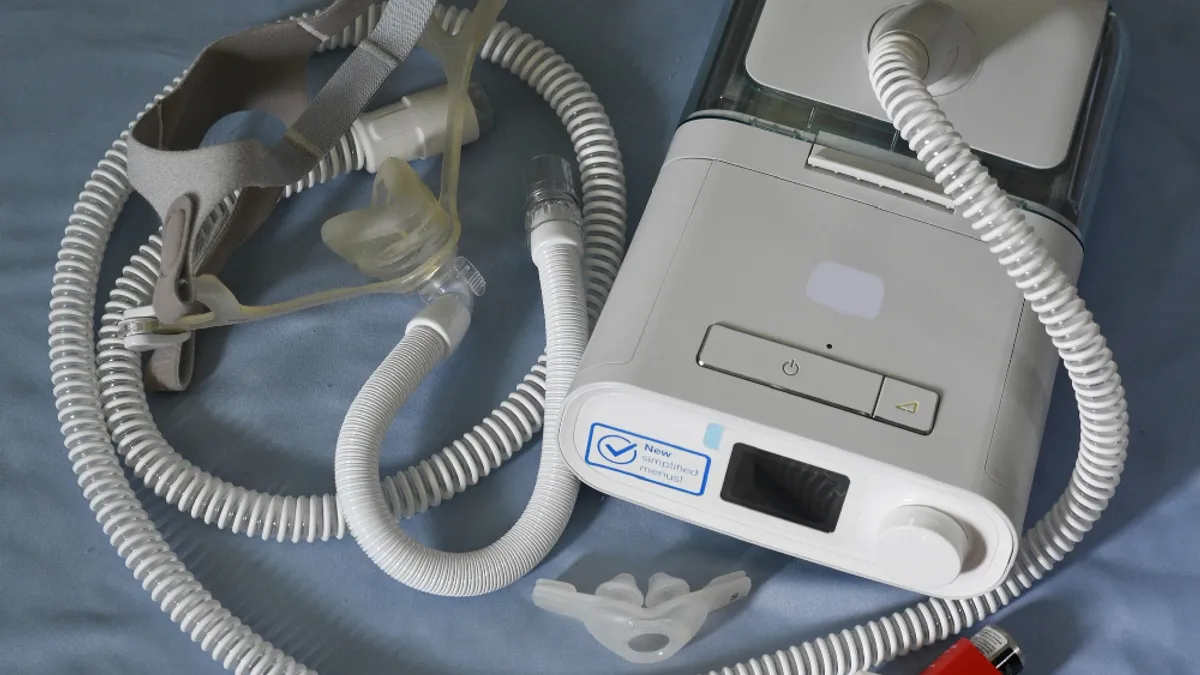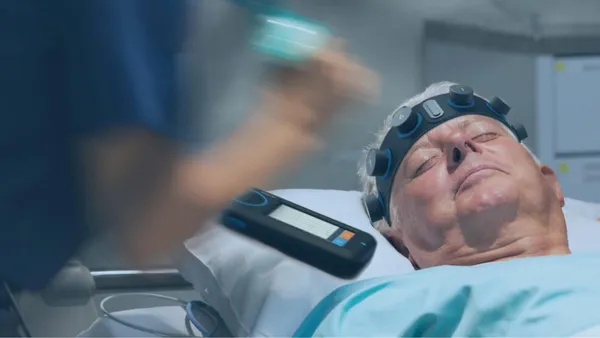Dive Brief:
- Philips contends that there is “a very low prevalence of visible foam degradation” in certain sleep apnea devices following a visual assessment of nearly 61,000 machines, the same devices affected by the company’s ongoing recall.
- The company, which released results from the assessment Tuesday, claims that about 2% of the 60,847 devices examined showed visible foam degradation or volume reduction. The assessment was done on first-generation DreamStation machines, which make up the bulk of the company’s recall of millions of sleep apnea and ventilator devices.
- The results follow an update from the Food and Drug Administration that the agency received over 21,000 medical device reports associated with Philips’ recall, including reports of 124 patient deaths.
Dive Insight:
In June 2021, Philips announced that it was recalling millions of sleep apnea and ventilator machines due to the breakdown of foam that is meant to quiet the devices. Users can inhale or ingest the particles once the foam breaks down, possibly exposing them to toxic chemicals.
The recall has grown to over 5 million devices over the last year, and as of May 20, Philips has set aside 885 million euros ($934 million) to address the recall.
Philips faces lawsuits from patients claiming the company knew about the foam degradation and health risks but delayed action. The U.S. Department of Justice is also looking into the company’s handling of the recall.
In its latest update, Philips notes it found visible evidence of foam breaking down in about 2% of the 60,847 “returned/used” first generation DreamStation machines. It said devices that used an ozone cleaning method were 14 times more likely to have visible foam degradation.
Philips has previously pointed to ozone cleaning as a reason for foam breakdown. A Philips spokesperson said that if no ozone cleaning is used and there is no visible foam degradation, there is no reason to believe that there will be foam particulates present. Still, the company is now conducting tests to determine if there are still potential health risks for users.
The company separated the machines into three categories: no use of ozone cleaning, use of ozone cleaning and unknown. Users self-reported whether the ozone cleaning method was used or not. The batch of 60,847 devices was from the U.S. and Canada.
Philips visual inspection of certain DreamStation devices
| Inspected devices | Devices with visual foam degradation/ volume reduction | |
|---|---|---|
| No use of ozone cleaning | 36,341 | 164 |
| Use of ozone cleaning | 11,309 | 777 |
| Unknown | 13,197 | 164 |
| Total | 60,847 | 1,105 |
SOURCE: Philips
Philips added, “422 devices of the inspected 60,847 returned/used devices are linked to a reported foam degradation complaint. However, only 18 out of these 422 devices (4%) actually showed visible foam degradation.”
The company examined 1,360 returned/used DreamStation devices from various countries in Europe and 931 from Japan. According to the update, none of the machines “showed significant visible degradation.”
The FDA has ordered Philips to notify all impacted customers of the recall after finding that numerous customers were not aware that the recall was initiated. The agency’s Center for Devices and Radiological Health is also recommending additional orders on the company regarding a repair and replacement program for affected devices.
In Tuesday’s update, Philips reiterated that exposure to the level of volatile organic compounds found in the foam “is not anticipated to result in long-term health consequences for patients.” The company released test results of first generation DreamStation machines looking at the compounds and health risks in December, although testing is ongoing.
In May, the FDA released data showing that over 21,000 medical device reports were made between April 2021 and April 2022 regarding devices affected by the recall. The reports included 124 patient deaths and a wide range of injuries, such as cancer, pneumonia, asthma, infection and chest pain.
CDRH Director Jeff Shuren said in a May statement that the center is “continuing to closely monitor the reports and the risk posed by the foam.”












